When executed well, the slapshot is the fastest shot in floorball. Where do the speed and power come from? That’s what I’m gonna dive into today, helped by ice hockey and… physics!
Fact: in 2011, the record for the hardest ice hockey shot was broken: Denis Kulyash (Russia) managed to shoot with a speed of no less than 177.5km/h!
What can you expect in this article?
- Short Introduction to a Slapshot
- “Science B*tch”: the Physics behind a Slapshot
- A comparison with floorball;
- Basic advice for your slapshot.
In will start with a brief introduction to the technique of a floorball slapshot so we set the definition of what a slapshot entails in floorball (so we’re on the same page). It’s not meant as a ‘Slapshot 101’. A ‘How to do a slapshot’ article will probably follow in the future.
Note: what I call ‘slapshot’ can be applied to both hockey and floorball, unless I specifically mention which sport I am talking about. Where I write ‘ball’, often ‘puck’ can also be read and vice versa.
The National Science Foundation (NSF) has conducted a number of studies on ice hockey, from a physics perspective. One of the studies concerned the slapshot, one of the fastest projectiles in team sports worldwide.
Recommended to you: in an earlier article about hockey and floorball we discussed the Royal Road. This imaginary line on the ax of the hockey field increases your goal-scoring chances – if you use it correctly. Click on the button below for the article:
Short Introduction to a Slapshot
What’s the technique behind a slapshot (in hockey and floorball)? Here’s, in a few steps and VERY basic, how it looks like. To illustrate the movements, we’ll use some snapshots from the Salming Academy you can find on YouTube. :
1. It starts with lifting your stick (with two hands) backward up, to sometimes far above your shoulder.

2. Then the shot starts, but beware: you don’t hit the ball/puck directly, but you aim to hit the floor/ice first instead!
3. When hitting the floor, your stick will bend and become ‘charged’ – like a bow that you pull to shoot an arrow. Bending the stick – also called the flex – causes energy to build up, in order to be able to launch the ball even harder.

4. The shot ends when you’ve launched the ball towards the goal while aiming your stick in the same direction. Hopefully, a loud cheer will follow now as your shot was successful!

Rasmus Sundstedt, national team player of Sweden – and who we “abducted” in one of our recent articles) – shows how devastating a slapshot can be, and also why it is potentially the fastest shot in a player’s arsenal.
How fast are we talking?
Guinness World Records, unfortunately, doesn’t have a ‘fastest floorball shot’, but we did find this video on YouTube. The shot reached 205 km/h!
A puck is, of course, a lot heavier than a floorball, but for both sports you now might understand even better why goalkeepers wear so much protective gear!
Science B*tch: the Physics behind a Slapshot
The National Science Foundation has been investigating slapshots (among other subjects). Dr. Jim Gates (University of Maryland, USA) is a professor of physics. According to him, a slapshot is a perfect combination of energy, work, and power. The more of everything you have, the better!
[ppp_non_patron_only]As much as we love floorball, we dedicate a lot of time and money to the FloorballToday project (more info here). That's why we ask you for a small monthly donation. By clicking the button below you can become one of our supporters and read the rest of the article. Thanks a lot! Already a patron? Then here is where you can login. [/ppp_non_patron_only][ppp_patron_only level="6" silent="no"][ppp_patron_only level=”6″ silent=”no”]
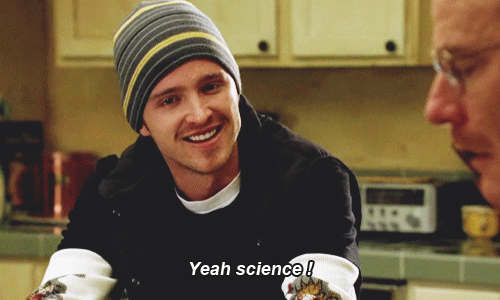
Let’s start this explanation with… energy!
Energy
Energy makes the ball move. If you want an object (in this case the ball) to move quickly, you should put as much energy into it as possible. Compare it to running: if you want to go fast, you have to put more energy into it.
However, now it becomes a little more difficult: the energy is divided into two types:
- Kinetic Energy (KE): the energy of movement
- Potential Energy (PE): the energy stored in an object (the flex of the stick).
KE is always connected with motion, Jim Gates mentions. The Kinetic Energy is wherever there is motion. In a slapshot, this starts with the swing of the stick, because the arms move (Kinetic Energy), but also the stick – so there is KE in the stick! Kinetic Energy is also created when the bodyweight is moved from the back leg to the front leg.
The Potential Energy is what you can call the flex in floorball. It is also called the torque. What happens as soon as the blade hits the floor or ice? You can think: the speed is reduced because there is resistance, but this turns out not to be the case. The Kinetic Energy remains present (because the movement of the arms, stick and legs continues). But: there is also potential energy now, from the moment the shaft starts to bend.
Building up energy makes your slapshot go even faster. This is the reason why you don’t aim for the ball in a slapshot, but for the space about 20-50 centimeters in front of the ball. If you now have enough speed in your arms (Kinetic Energy) and you add the Potential Energy of the flex, you don’t have to do anything else: your stick does all the work!
The two streams of energy come together the moment you hit the ball/puck. The Kinetic Energy is as it were ‘transferred’ to the ball. The Potential Energy is converted into Kinetic Energy, so the ball will go forward with even more speed.
E = K + P
In other words: Total Energy = Kinetic Energy + Potential Energy
The law of conservation of energy (yes, we’re getting more and more into physics) states that energy cannot be created or destroyed. The total energy of an isolated system remains constant. It can only be transformed or transferred from one form to another.
What can be done with energy is that it is transformed. Think of electricity that is transformed into light or the heat that develops in your muscles during a workout. The same happens with a slapshot: the Kinetic Energy of the movement of arms and stick plus the Potential Energy of the flex of your shaft comes together in the ball, leading to a different form of energy.
Can we take a lesson from this? It’s good to realize that trying to force your blade into the floor as much as possible will waste energy, and will not improve your slapshot. Similarly, the slapshot with the loudest sound may impress your teammates but it’s unlikely you will have the fastest shot.
Work
In physics, Work is when a force acts upon an object resulting in the displacement of the object.
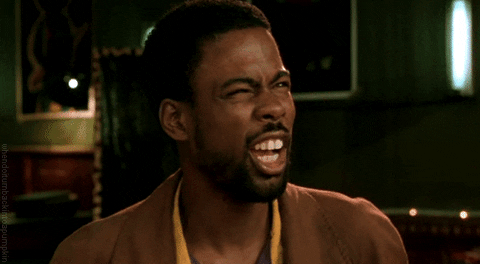
Alright, let’s try to simplify this.
Work means something gets in motion, for instance… a floorball once you hit it. The total amount of work can be measured by the following formula:
Work = Force x Distance
Force: The force exerted on the ball (via the combination of Kinetic and Potential Energy)
Distance: the distance at which the energy is applied, which in this case is the distance from the point that your blade touches the ground and the point that your blade touches the ball (normally about 20-50 cm).
The more force you apply (Force) and the longer your blade touches the ground (Distance), the more work you can achieve! Work is usually written in the physical unit of Joules.
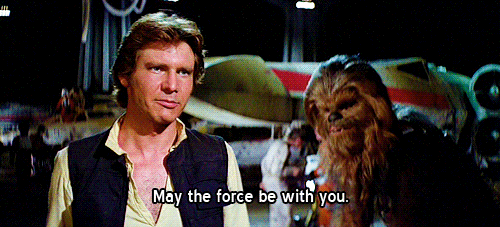
Power
In sports, a powerful shot means it’s fast. If the ball hits you, it might hurt, which is one of the reasons goalkeepers wear protective gear.
In physics, ‘power’ (P) is called differently, although it’s about the same thing. Physicists call power:
the measure of the amount of work done over time
(In this, ‘work’ is indeed what we just found out in the previous part: Force x Distance.)
The power of your shot is determined by the amount of force (work!) on the ball, divided by the length of time in which the force transfer takes place. In the ice hockey example of the NSF, the shot was expressed in 154 Joules. The transfer of energy to the puck lasted only 0.02 seconds. The force is now determined by dividing 154 by 0.02, leading to P = 7700 Joules/sec or Watts.
So this calculation also shows that the shorter the contact between the ball and the stick, the more powerful the shot is!
How do we apply this in floorball?
The good news is: actually, all the terms in this article apply to floorball! The kinetic energy of your arm swing and posture, the potential energy of your stick’s flex, the force you apply to the ball and the total power that causes the ball to disappear into the top corner: you can apply it all in your next training or match.
Is there any less good news?
Yes, I think there is. The research is based on hockey and the sticks used in that sport are stronger and stiffer than floorball sticks. This means there is a good chance that one day you could break your stick while performing a slap shot. Maybe it even happened to you?
On the other hand, at 23 grams, the floorball is much lighter than an ice hockey puck (between 156 and 170 grams). So the ball needs less power to speed up, compared to a puck.
Advice for your slap shot
I said in the introduction that this was not going to be a ‘Slapshot 101’ article. It might be in the future (let me know if you’re interested!), but for now, I’ll stick to a few short tips, linked to work, energy and power:
- Increase kinetic energy? Make your arm swing long and fast;
- Increase potential energy? Make sure your stick bends well (I’m not responsible for broken sticks!), keep your lower hand low enough to put pressure on the stick and make sure you push your blade well into the ground;
- Increase work? Try to make the distance your blade slides over the ground as long as possible, and apply the two tips above;
- Increase power? Try to touch the ball as short as possible.
Ice hockey and floorball
Unfortunately, we can’t do such research within floorball ourselves, but fortunately, we can do it through our ‘big brother’. With the articles about ice hockey we always have to be critical to be able to decide if we can benefit from it within floorball.
In this case, it certainly seems to be useful for our sport, so take advantage of it!
Video: https://nsf.gov/news/mmg/mmg_disp.jsp?med_id=72607&from=
Questions, feedback or anything else?
Do you have any questions about the article, or would you like to discuss anything? Let me know by contacting us via Patreon, Instagram or mail.
[/ppp_patron_only]



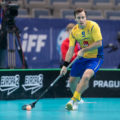
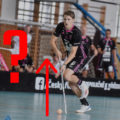


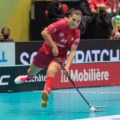
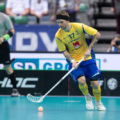
No Comments
Leave a comment Cancel